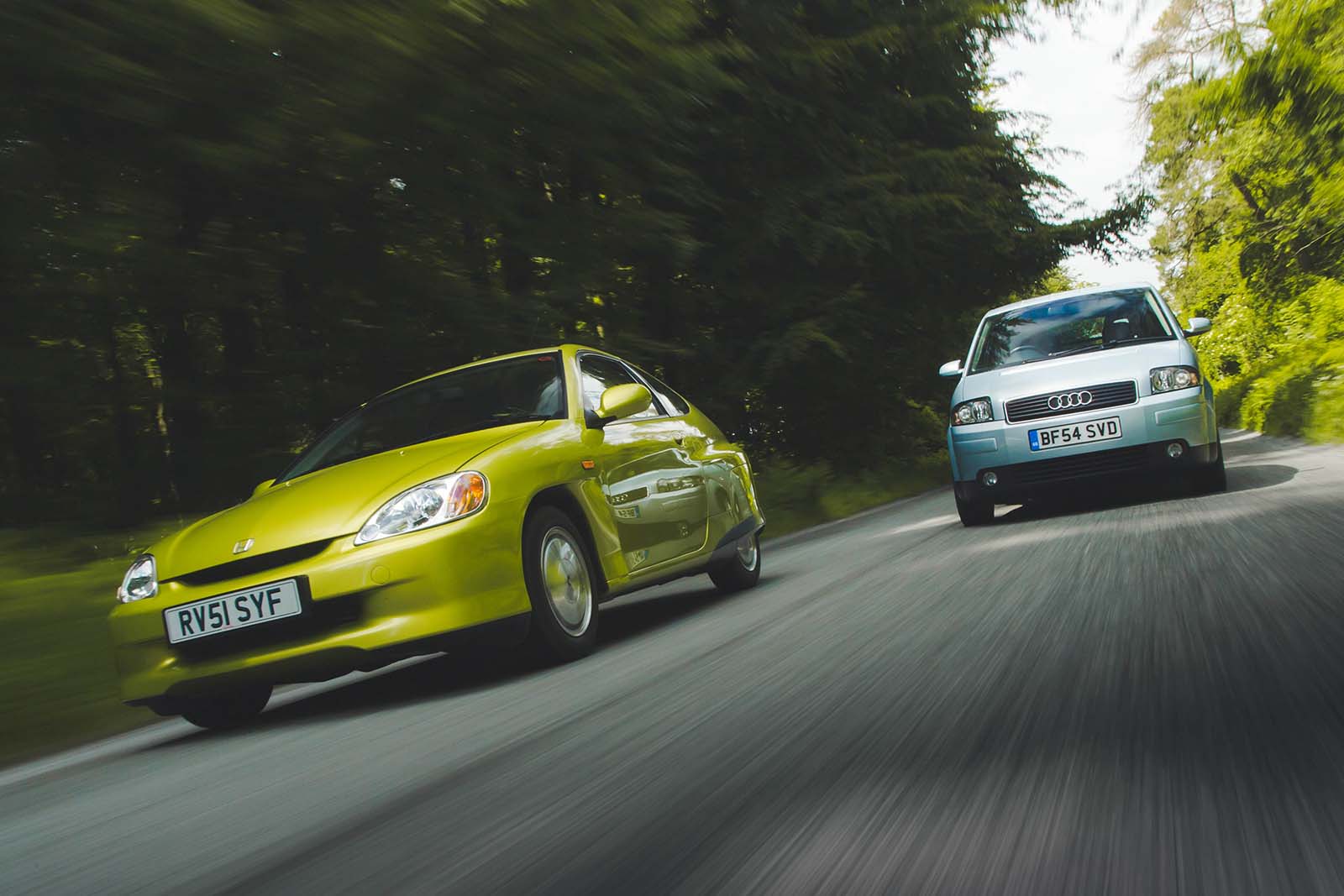Audi A2 meets Honda Insight: The future we never got
Open gallery "Both of these machines now feel like the perfect fit for today’s motoring landscape", says Disdale Neither demands any real concession to driving in 2024 The A2 wasn’t Audi’s first attempt at a small car. That will be the 50, which was launched in 1974 The low-slung first-generation Insight is a two-seater only In the course of the Insight’s development, Honda registered more than 300 patents A2’s interior looks astonishingly contemporary Insight has a good driving position and a decent view out Close News 11 mins read 3 August 2024 Follow @@JamesDisdale You might remember Tomorrow’s World, the prime-time BBC science and technology TV programme that offered viewers a weekly peek into the future. A staple of the broadcasting schedule during the last four decades of the previous century, it covered the up-and-coming gadgets and gizmos that, it reckoned, would become indispensable in the years to come. More often than not, though, these devices disappeared without a trace after the grand claims of their life-changing significance proved somewhat wide of the mark. The Audi A2 and Honda Insight would have been perfect fodder for the show’s presenters back in the day. Both models celebrate their 25th birthdays this year, and when they were launched (within months of each other at the tail end of 1999) they promised to herald the dawn of a new efficiency-chasing automotive era when advanced tech and high-minded ideals met to deliver money-saving motoring for the masses. Related articles Yet despite being intensively engineered and packed with innovative design, this silver-jubilee duo proved to be four-wheeled follies. They sold in tiny numbers, lost their manufacturers more money than they ever made and, like Tomorrow’s World, were quietly dropped in the mid-noughties. But was it a case of the right idea, just the wrong time? Introducing the Honda Insight and Audi A2 With today’s ever greater focus on the cost of living and conserving the world’s natural resources, this parsimonious pair are arguably more relevant than ever. And despite their disparate outward appearances – one’s a conventionally powered compact five-door family hatchback and the other a slinky, hybrid-assisted coupé – they both pursue a minimal mass and low drag path in their quest to deliver fuel-sipping progress. It was the two-seat Honda that arrived first, making its debut a month or so before the A2, and in many respects it had the longer-lasting impact, thanks in no small part to its hybrid powertrain. Beating the Toyota Prius to the punch (outside Japan at least), the Insight was one of the first mass-produced (in the loosest sense) petrol-electric cars and helped to set a trend that’s greater now than it has ever been. Latest Reviews Skywell BE11 5 Skywell BE11 View all car reviews Back to top Even by today’s standards, its novel Integrated Motor Assist (IMA) set-up is fairly advanced. It features a thin (60mm) 13bhp electric motor bolted to the crankshaft of the car’s lean-burn 67bhp 1.0-litre three-cylinder petrol engine. Like today’s mild-hybrid units, the brushless motor delivers a slug of low-speed torque, captures otherwise lost energy when slowing and acts as the combustion engine’s starter motor, enabling a stop-start function. If all that sounds familiar, it’s because you’ve probably driven a car recently that has a similar set-up, although it will be called a mild hybrid now. Design and dimensions Yet it’s the car’s looks that garner the most attention today. For starters, the Insight looks tiny alongside today’s sea of SUVs and it’s even dwarfed by the A2, a car that’s just 3.8m long. Then there’s the aerodynamically honed design, complete with its faired-in rear wheel arches and a Kamm tail that, like the Audi, requires a split-pane rear screen. At just 1.3m tall, the Honda sits low and, when you follow one down the road, you’re also very aware of its narrow rear track, which helps it to achieve an aerodynamically ideal teardrop shape that results in a greasy-smooth drag coefficient figure of just 0.25. The slippery body is made from aluminium, as is the car’s structure, suspension and much of the engine, which also uses plenty of magnesium. As a result, the Insight weighs as little as 835kg, although our test car – a tidy 65,000-mile example from Honda UK’s own fleet – is a ‘portly’ 852kg owing to its optional air-con. Back to top The A2 isn’t such a featherweight, but an all-in figure of 895kg (although the diesel engine in our version adds 95kg to this figure) is frankly incredible for a car that will comfortably accommodate four adults and contains a useful 390-litre boot. Once again, aluminium is the vital ing

This is another headline indexed and brought to you by the AUTOMUNDO website.
